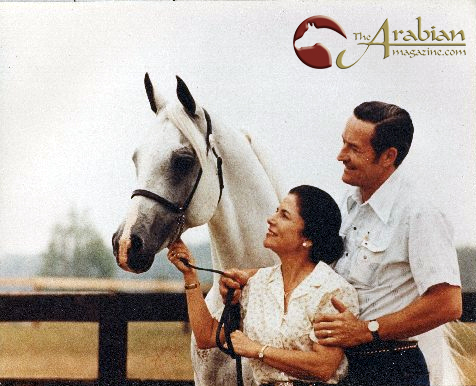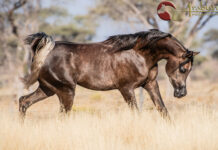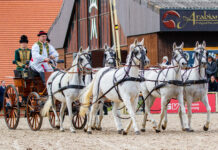The story of Gleannloch Farms in the USA dates back to the 1950s, when it was known as the premier source for Egyptian Arabian horses. In this wonderful, historical article, Steve Diamond tells the history of this famed stud for a new generation of Egyptian breeders to enjoy. Originally run in The Arabian Magazine in March 2008, it was shared in The Arabian Breeders’ Magazine in summer 2023 in tribute to Rhita McNair, who passed away that May.
Doug and Margaret Cullen Marshall had a love of horses since childhood. Margaret’s family owned horses on their 14,000 acre ranch near Columbus, Texas. Doug rekindled his love for horses while he was in the US Calvary and rode the California and Mexican border. He was later transferred into the Air Force. During World War II, he was stationed in North Africa and while in Morocco, he borrowed an Arabian mare owned by a farmer to ride. It was quite an adventurous ride as a stallion broke loose of his hobbles in a nearby paddock and chased him for several miles, trying to knock Doug off the mare with his front feet! Luckily, some soldiers noticed the happenings, captured the stallion, and gave Doug and the mare some well-deserved relief. Later, when Rommel was at El Alamein and the Allied forces were afraid that Cairo was going to fall, Douglas was among the men that were sent to the city under cover that night. When daylight appeared, he could see the horses over at the Royal Agricultural Society in the distance, but he could not find a road to get there. Frustrated with his desire to see these beautiful creatures up close, he borrowed a jeep and drove straight through the desert. He described it as “heaven” and vowed then and there that, if he made it through the war, he would own an Arabian horse.
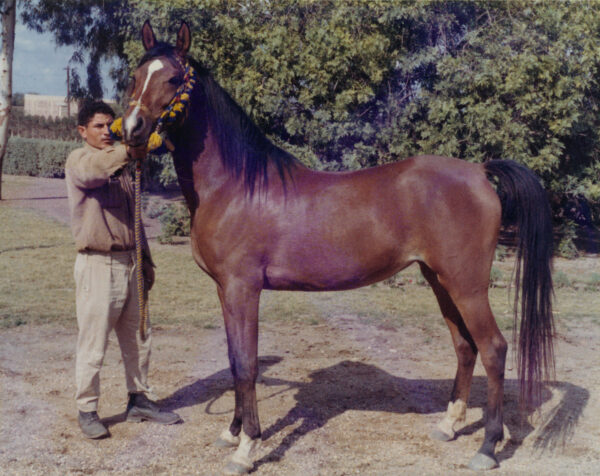
Doug was transferred back to Texas and in the spring of 1945, he and Margaret were married. They had two boys, Hugh and Doug Jr. The family loved horses and rode on the Cullen Ranch. During that time, Doug had become acquainted with another Arabian breeder from Ottawa, Minnesota, named Dan Gainey. Doug knew Dan from political circles only and when he found out that Dan owned 38 Arabians, he insisted that Dan either sell or give him one. Dan was reluctant as, in those years, Arabian horses in the US were hard to find. Finally, out of frustration, Doug told Dan that if he could not part with one of his horses, to take his name and phone number out of his address book. Well, that seemed to work for in the spring of 1954, a trailer pulled up to the Marshall’s Rancho Cullen with the Egyptian-bred mare Fa Gazal (Fadl x Kostrzewa), bred by Henry Babson. Doug and Margaret bred Fa Gazal to Frank William’s beautiful grey stallion Moneyn (Raseyn x Monica) to produce their first foal in 1955. The foal born was a filly, Kahla, and thus was the birth of Gleannloch Farms and their wonderful contribution to the Arabian world.
They soon decided that if they were going to raise horses, they would need their own farm and so they purchased some land in Spring, Texas, and built their home and stables. In autumn 1957, Jim Reno went to Edna Drapers farm in California and secured the mare Jubilema (Jubilo x Menfis) and her Sureyn (Raseyn x Crabbet Sura) son, Surf.
The Marshall’s scoured the country whenever they heard of a good horse available, and more horses were acquired. In 1959 Norm McAnelly, their farm manager, went on a business trip to Washington DC and on his return, he stopped by an equipment sale in Kansas and found two Arabian horses of interest including a white stallion imported from Egypt named Moftakhar (Enzahi x Kateefa). Norm purchased the stallion for $1,500 and took him back to Texas. The Marshall’s were enthralled with this horse: he was so different from anything they had at the time. Moftakhar and Doug became very close, and he is the horse that sparked the Marshall’s interest in Egyptian Arabian horses. At that time, with the farm and horses growing, the Marshall’s felt the need for a full-time trainer. Through Norman McAnelly, Tom McNair and his wife, Rhita, were hired.
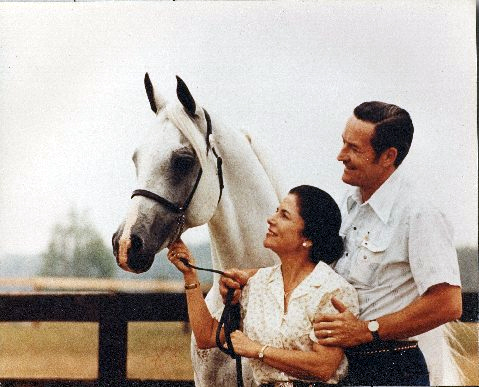
It was 1960 when Gleannloch first hit the shows with Tom and Rhita and the rest is history. Surf was the horse that originally put Gleannloch Farms on the map. He was High Point horse with the AHSA for two consecutive years in 1961 and 1962 with Tom, and he sired countless national winners for Gleannloch. He was also the mount for both of the Marshall’s sons as well as Doug.
They were winning from coast to coast, and things were great. However, Doug and Margaret felt that there was something more out there for them – a calling, so to speak. Each time they looked at their beloved Moftakhar, he evoked images of the desert to them. Doug was reminded of the horses that he had seen at the Royal Agricultural Society in Egypt – now the Egyptian Agricultural Organization (EAO). He was in constant contact with famed breeder and Arabian pedigree expert Carl Raswan. He had mapped out a travel plan with Carl to go to the Middle East in search of horses, but as fate would have it, Carl died before he was able to make the trip. Doug and Margaret voyaged on in quest of what they were looking for and while they saw many horses throughout the Middle Eastern countries, none were so captivating and beautiful to them as those in Egypt.
Doug and Margaret went to the EAO in 1960 and having looked over the horses, they were very smitten with the bay stallion El Sareei (Shahloul x Zareefa) as well as the Nazeer (Mansour x Bint Samiha) get, particularly an alabaster, majestic, white stallion named Morafic (Nazeer x Mabrouka). These horses seemed, in their minds, to be the perfect cross. The Nazeer and El Sareei/Shahloul (Ibn Rabdan x Bint Radia) cross seemed to be to their liking, so they purchased Bint Maisa el Saghira (Nazeer x Maisa), a full sister to El Sareei; her full sister Bint Maisa; Salomy (El Sareei x Malaka); Bint Bint Kateefa (Antar x Bint Kateefa), a half-sister to Moftakhar; and Bint Nefisaa (Nazeer x Nefisaa).
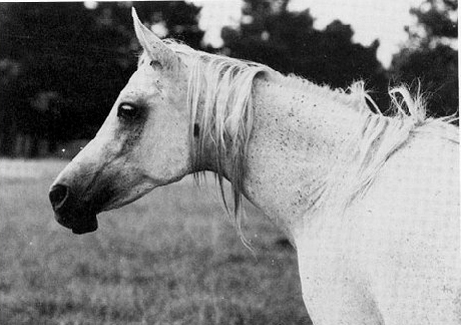
Theses mares came into port in New York City in 1961 after a three-week journey. There were tales of storms at sea and of the waters so rough that the sailors could not get on deck to feed or water the horses. Eagerly awaiting their new horses, the Marshall’s were handed the misfortune of the horses being tested positive for African Horse Sickness. They had been inoculated for this disease before they left Egypt and tested positive because it was still in their system. Doug and Margaret had the choice to either send the horses back or have them destroyed. Well, that was not hard for them to decide, and they sent them back to Egypt. The next year in 1962, they re-imported them back to the US, and this time they had a clean bill of health at the quarantine station when they got to New York.
The journey had been very tough on the horses, with both Bint Nefisaa and Bint Maisa terribly stunted from the ordeal. Bint Maisa el Saghira had been bred to El Sareei while back in Egypt and produced a stillborn filly from this hardship. However, Salomy took things a little better and produced a nice healthy colt, Saba el Zahra, by Morafic.
In 1963, the Marshall’s imported the Morafic daughter Sammara (ex Sameraa) and Hamidia (Antar x Nazeera), who died shortly after her arrival into the States. The following year, two treasures were acquired from Sayed Marei’s Al Badia Stud: Bint Mona (Nazeer x Mona), a full sister in blood to Morafic, and the mare Sanaaa (Sid Abouhom x Yashmak). Both of these mares were very important in later years for the stud’s success.
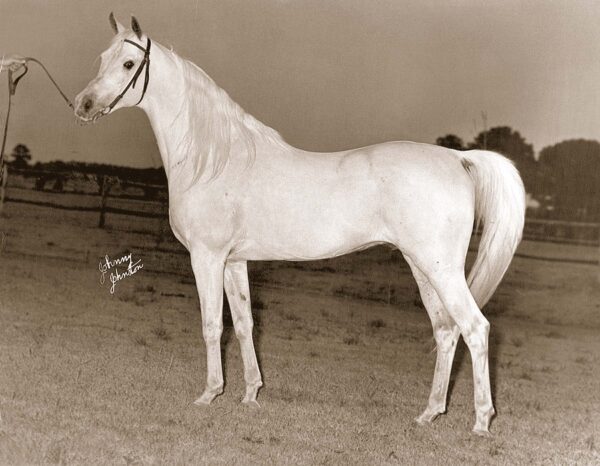
In 1964, the Marshall’s took Tom and Rhita with them on their trip to Egypt. The McNair’s were not used to seeing horses in such thrifty condition and were taken aback at first. They felt they had better horses at home. But after a few days of studying them, they soon realised what special horses these were, and they were immediately taken with Morafic and his get. They wanted to see Morafic under saddle, but because he had run off with his rider in a race and through a fence, the stable hands were very scared of the horse. Tom somewhat shamed them into riding Morafic. They had the head groom saddle him up and, at first, Morafic put on quite a show. Tom then got on him and quickly realised that the horse was just bluffing. Not too long after, Tom worked with him, and he and the horse came to an understanding and they got along fine.
Night after night, they discussed which horses to buy and finally Tom suggested to Doug: “Why not make an offer on Morafic?” Doug did not want to do anything to hurt the EAO’s breeding programme, but he did want the horse. The EAO had a replacement for Morafic with his son El Araby (ex Hafiza) and they said that if Doug would leave him for one more year, he could buy Morafic. Unfortunately, El Araby later ran out the front gates of El Zahraa and was hit by a bus.
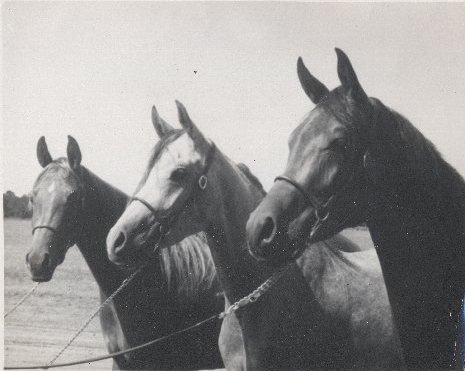
Meanwhile, Rhita had fallen for what the others thought was a somewhat homely Morafic daughter out of the black El Sareei daughter Mohga. Named Nahlah, Rhita cried when her name was not on the final list of horses to be bought. Doug laughed that he had to buy her just to appease Rhita, but he was never sorry for that purchase as she later went on to be 1967 Reserve National Champion Mare and proved his Morafic/El Sareei cross.
Join us for part two of this feature next Thursday.


